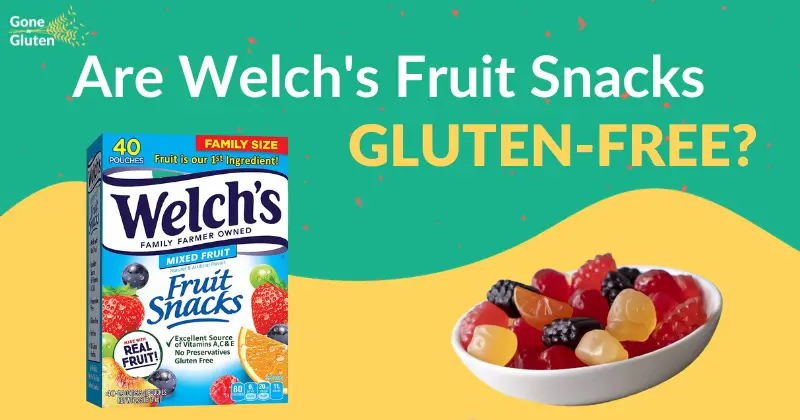Following a gluten-free diet can have its challenges. You have to be constantly aware of what you can consume, and this includes drinks. If you’re still transitioning, you may want to pause and read the label before sipping your go-to beverages.
As Coca-Cola is the world’s largest beverage company, I was curious to know, Is coke zero gluten-free? I went straight to the company’s website to get some answers.
The answer is yes. According to Coca-Cola’s official website, none of the drinks contain gluten. Coca-Cola claims that all of its beverages are suitable for those with coeliac disease or gluten intolerance. You can enjoy all variations of the drink with peace of mind.
Below is a screenshot from their website for reference.
What’s in Coke Zero?
Time to take a closer look at the ingredients. If you have celiacs disease or a gluten intolerance like me, you have a knack for label reading. A gluten-free label can be a time-saver, but it can be beneficial to take a closer look at what you’re consuming. The below picture was taken from the Coca-Cola website for reference.
Still confused? Do you mean to tell me phenylketonurics isn’t in your daily vocabulary? Don’t worry, not long ago, I couldn’t pronounce the word, let alone define it. I’m going to go a step further and break down each ingredient so you can clearly see what’s inside your drink.
1. Carbonated Water
This is the most self-explanatory ingredient on the list. This is water that has been infused with carbon dioxide gas which gives the soda its bubbles. I try to avoid drinking soda (or pop) and replace it with soda water, this quenches my craving for fizz without all of the excess sugar and chemicals.
Pro Tip: Spruce it up with a lime or lemon wedge. If you’re looking for something a bit sweeter, add a splash of fresh orange juice. You can also buy naturally flavored soda waters; mango is my favorite.
2. Caramel Color

Carmel color is a widely used food coloring in beverages and gives Coca-Cola its deep brown hue.
Carmel color is created by heating carbohydrates such as invert sugar, molasses, malt syrup, and more. It is generally gluten-free in North America, and if it contains wheat, it must be stated on the food label per the Food Allergen Labeling and Protection Act.
3. Phosphoric Acid

Phosphoric acid can also appear as orthophosphoric acid, remember this when you put your label-reading skills to use in the future. This ingredient is an odorless liquid that gives the beverage an acidic and tangy flavor.
4. Aspartame
Aspartame is an artificial sweetener and is used as a sugar substitute. Aspartame consists of two amino acids, aspartic acid, and phenylalanine. You may have heard this name before due to some health controversies. While I can’t say that Aspartame is healthy for your body, I can assure you it is gluten-free.
5. Phenylalanine

Phenylalanine, say that three times fast. Phenylalanine is an amino acid that is found in aspartame. While this is not a separate ingredient it is clearly labeled on the nutrition information for a reason.
While Phenylalanine does not negatively affect the majority it can cause health concerns for certain individuals.
6. Potassium Benzoate

Potassium benzoate is a white odorless powder that is used as a preservative in food and beverages. It helps to prevent the growth of mold and bacteria, giving the product longer shelf life.
The white powder is created by combining and heating benzoic acid and potassium salt.
Potassium Benzoate is indeed gluten-free. Remember the name of this ingredient as it is often used in other gluten-free products.
7. Natural Flavors

Natural flavors are used in products to enhance the flavor of the beverage or food. According to the FDA, these are derived from the below fruits, vegetables, plants, and animal products.
- Spices
- Fruit or fruit juice
- Vegetable or vegetable juice
- Edible yeast
- Herb, bark, bud, root, leaf or similar plant material
- Meat, seafood, poultry, eggs
- Dairy products, or fermentation products
8. Potassium Citrate

Potassium Citrate is a white powder made of potassium salt of citric acid. This is added to products in order to control the pH balance. It is often used in medications to prevent kidney stones.
9. Acesulfame Potassium
Another fun word to say. Acesulfame Potassium is a synthetic sugar substitute that helps to give Coke Zero its sweetness. It can also appear under the names acesulfame K or Ace K.
Take a deeper look into how Coca-Cola manufactures its products.
Coke Zero Flavors
Are you a big fan of Coke Zero? Then you are in for a treat. If you didn’t already know, there are seven different variations (including the original) of the zero sugar soda. These include the following:
- Coke Zero Sugar
- Caffeine Free Coke Zero Sugar
- Coca-Cola Cherry Vanilla Zero Sugar
- Coca-Cola Zero Sugar
- Coca-Cola Vanilla Zero Sugar
- Coca-cola Orange Vanilla Zero Sugar
Other Gluten-Free Zero Sugar Sodas
While coke is more easily accessible than other beverages, it’s not the only zero-sugar soda on the market. If you’re looking for a zero-sugar beverage that is gluten-free, you have a wide variety to choose from.
These include:
- Fanta Orange Zero
- Dr. Pepper Zero Sugar
- Dr. Pepper Cherry Zero Sugar
- Dr. Pepper Cherry Vanilla Zero Sugar
- Caffeine-free Dr. Pepper Zero Sugar
- Mountain Dew Major Melon Zero Sugar
- Pepsi Zero Sugar
- Pepsi Zero Sugar Wild Cherry
- Sprite Zero Original
- Sprite Zero Cherry
Conclusion
Not only is coke zero gluten-free, but there are numerous other flavors to choose from as well as other zero sugar brands. If you’re trying to cut down your sugar levels even further, try flavored soda water.
Looking for other gluten-free beverages, check out more articles on Gone Gluten.



